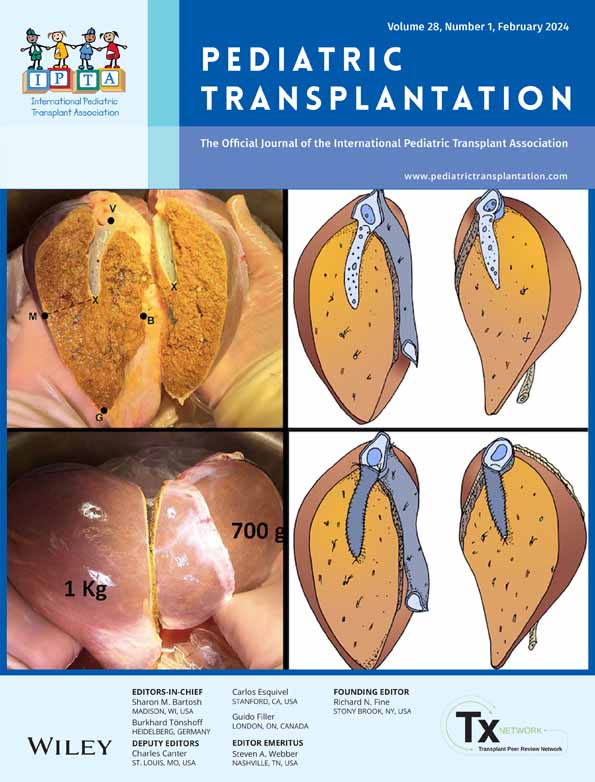Recanalization of portal vein thrombosis after pediatric liver transplantation: Efficacy and safety of the transsplenic access
Abstract
Background
Endovascular management of portal vein thrombosis (PVT) is challenging. Transsplenic access (TSA) is growing as an access option to the portal system but with higher rates of bleeding complications. The aim of this article is to evaluate the efficacy and safety of transsplenic portal vein recanalization (PVR) using a metallic stent after pediatric liver transplantation.
Materials and Methods
This is a retrospective review of 15 patients with chronic PVT who underwent PVR via TSA between February 2016 and December 2020. Two children who had undergone catheterization of a mesenteric vein tributary by minilaparotomy were excluded from the patency analysis but included in the splenic access analysis. The technical and clinical success of PVR and complications related to the procedure via TSA were evaluated.
Results
Thirteen children with PVT were treated primarily using the TSA. The mean age was 4.1 years (range, 1.5–13.7 years), and the most common clinical presentation was hypersplenism (60%). Technically successful PVR was performed in 11/13 (84.6%) children, and clinical success was achieved in 9/11 (81.8%) children. No major complications were observed, and one child presented moderate pain in the TSA (from a total of 17 TSA). The median follow-up was 48.2 months. The median primary patency was 9.9 months. Primary patency in the first 4 years was 75%, and primary assisted patency was 100% in the follow-up period.
Conclusions
Transsplenic PVR is a safe and effective method for the treatment of PVT after pediatric liver transplantation.
CONFLICT OF INTEREST STATEMENT
The authors have no conflicts of interest to disclose.
Open Research
DATA AVAILABILITY STATEMENT
The data that support the findings of this study are available on request from the corresponding author. The data are not publicly available due to privacy or ethical restrictions.




